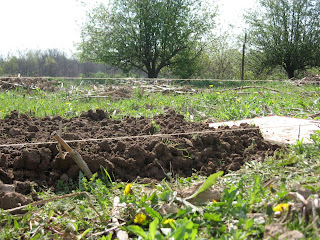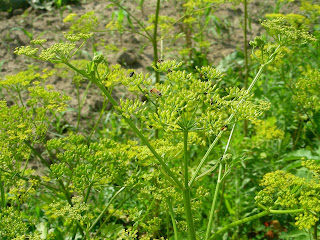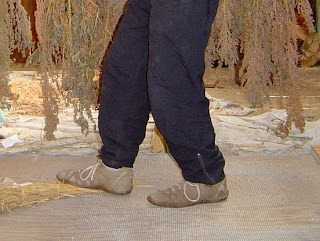Whew! Has it already been a month and a half? Please excuse my delinquency, and take my word for it that we've been busy. Hopefully I'll get the chance to post about a number of our April adventures.

But for now, our new livestock: A few thousand head of bees!
I'm the kind of guy who does not jump right into an activity with both feet. I read about it, I ask questions, I watch, and then I hesitate. Beekeeping has been on my "I think it would be so cool to do that" list for years, but it took a confluence of events to finally get me past the hesitation phase.
Step one was that my sister and brother-in-law got an IOU wedding present for a bee hive, and didn't foresee themselves keeping bees any time soon. They offered it to us, and I enthusiastically accepted.
Step two was that a farming friend and mentor down the road, Steve, keeps a few colonies and encourages anyone interested to start keeping bees. He told me the best time to start was right now (that was three years ago), and that he'd give me a swarm.
Step three happened last spring, when he invited me over to go through his hives with him on the first warm enough day of the year. This was the closest I could get to going on a beekeeping test drive, and I was pleased with the results. As someone who got stung a number of times as a child, I was unsure whether or not I could handle (literally) managing and eventually robbing thousands of stinging insects. And Steve encouraged me to follow his example, going without gloves. It was a great experience, and reassured me in a way the books couldn't that they aren't out to get you most of the time, even if you are messing around with their home in a very invasive way.
Steps four through, say, twenty, involved ordering equipment, searching thrift shops for some likely white pants and shirts, preparing equipment, re-reading all the books I'd read, finding new online resources, and readying the bees' area.
Finally, I waited eagerly by the phone for a few weeks for Steve's call that the bees had swarmed. When that happened I woke up eeeearly the next morning, went to pick them up, and drove a gently buzzing box home in the back of the car. In the photo at left you can see them coming out of their new hive for the first time. It was quite cold, so they were tentative. At that point I had begun keeping bees and, though I hadn't done anything to or with them yet, I was quite excited, proud, and content.
It's only gotten better since then, too. Here are some of the details:
The original gift was a bottom-board, inner-cover and telescoping outer-cover, and one hive body with frames. They came from Brushy Mountain Bee Farm, and since equipment can vary between companies it is conventional wisdom that one use components from the same one. (Since ordering from them I have received four identical catalogs at different points - a subtle hint that they'd like me to get others hooked on their product). So I went back to Brushy Mountain to get the rest of the equipment I'd need, since one hive body isn't enough.
Mine is an 8-frame hive as opposed to 10-frame, which describes how many frames each super holds. This, too, was a decision made by the giver of the gift. Since it's good to be able to interchange equipment between your hives, any hives I get in the near future will likely be 8-frame as well. That's fine, though. An 8-frame super is, of course, easier to lift than a 10-frame super.
You can finish the exteriors of your hives with many coatings, or even no coating at all. I went with linseed oil, because I like the idea of some weather protection, but would prefer a more natural choice (in look and ingredients) than paint. And, of course, they do look beautiful. The photo at top right shows three finished supers, three without coating, one that hasn't been assembled, and a couple of empty frames.

The spot I settled on for placement was our prairie, because it is as far as I can get from any chemically-cultivated field. There's disagreement on the cause behind colony-collapse disorder, but the presence of chemical pesticides, not to mention herbicides and fungicides, can't have a positive effect on colony health. And the genetically modified corn plants engineered to produce the soil-borne insecticidal bacteria BT
do manufacture it in every cell of their structure, including the pollen grains. When bees collect these (and, believe it or not, they do visit corn tassels) to take back to the hive as food for brood-raising, there are negative consequences.
I've visited the hive and opened it up twice since taking ownership, and am becoming more comfortable bit by bit (that's me at right). That's not to say that I haven't come up with perplexing questions from each observation, but I take comfort in knowing that there is a great deal to learn. I might as well start now!
I'm also lucky to have the beekeeping contacts that I have. I already knew I had a few friends and relatives with experience, but since embarking on this adventure I've come across multitudes of others who are either recent beginners or old hands. It is reassuring that at every turn I seem to find some great knowledge and ideas.
So here's to home-grown honey and wax, heaps of pollinators, and the great humming unknown!
12750

































